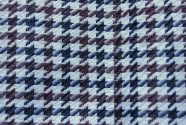
The Environmental Impact of Wool Production: Sustainable Practices in the Industry
Wool, that wonderfully versatile fibre we cherish for its warmth, resilience, and connection to the natural world, has a story that’s more complex than often perceived. As crafters and consumers who value natural materials, it’s easy to embrace wool as inherently eco-friendly. However, the journey from fleece to finished yarn involves processes and agricultural practices that carry a significant environmental footprint. Understanding this impact isn’t about dismissing wool, but about becoming more informed stewards of the materials we choose. Thankfully, a growing movement within the industry is focused on innovative and regenerative practices, paving the way for a more sustainable future for this beloved fibre. Exploring these challenges and solutions allows us to make choices that align more closely with our environmental values.
The environmental challenges of conventional wool production
The traditional image of sheep grazing peacefully on rolling hills doesn’t fully capture the environmental realities of large-scale wool production. Like other forms of animal agriculture, raising sheep for wool has considerable impacts. One major concern is greenhouse gas emissions. Sheep are ruminants, and their digestive process naturally releases methane, a potent greenhouse gas with a warming potential significantly higher than carbon dioxide over shorter timeframes. In fact, some sources refer to sheep as the ‘Humvees’ of the animal kingdom due to their methane output. Large flocks also produce significant amounts of manure, which, depending on management practices, can release nitrous oxide, another powerful greenhouse gas. Furthermore, expanding grazing land often involves clearing forests or converting natural habitats, leading to biodiversity loss, soil erosion, and disruption of carbon storage in soils and vegetation. Some analyses, like the ‘Pulse of the Fashion Industry’ report, have even ranked conventional wool production as having a higher cradle-to-gate environmental impact per kilogram than several synthetic fibres, challenging its automatic ‘eco-friendly’ status.
Beyond greenhouse gases, conventional wool production demands substantial resources. Vast tracts of land are required for grazing, which can lead to overgrazing if not managed carefully, degrading soil health and reducing the land’s ability to support biodiversity and retain water. Water consumption is another factor, needed not only for the animals themselves but also extensively during the processing stages. Scouring, the process of washing raw wool to remove grease (lanolin), dirt, and vegetable matter, is particularly water-intensive and generates highly polluted wastewater containing these contaminants along with detergents. Subsequent processes like dyeing and finishing also contribute significantly to water pollution, often involving chemicals that can harm aquatic ecosystems. The broader textile industry is estimated to be responsible for about 20% of global clean water pollution from dyeing and finishing, and wool processing is part of this picture. Concerns also exist around the impact on wildlife, with sheep farming sometimes linked to habitat degradation for native species and even disease transmission, as highlighted by studies on species like desert bighorn sheep.
Measuring the impact: Life cycle assessments and transparency
To truly grasp the environmental footprint of wool, we need robust methods of assessment. Life Cycle Assessment (LCA) has become the standard approach, offering a comprehensive evaluation from ‘cradle-to-grave’ – encompassing everything from sheep farming to the final disposal of a woollen garment. As detailed by the International Wool Textile Organisation (IWTO), LCA examines multiple environmental impact categories, including climate change (greenhouse gas emissions), energy consumption, water use (considering regional scarcity), land occupation, and toxicity. This holistic view is essential to avoid misleading conclusions that might arise from focusing on just one aspect, like biodegradability, while ignoring upstream impacts.
Several comprehensive LCAs have shed light on where the major impacts lie in wool’s lifecycle. Research published in resources like The International Journal of Life Cycle Assessment consistently points to the on-farm wool production stage as the largest contributor to greenhouse gas emissions, primarily due to methane from the sheep. However, the processing stages (scouring, spinning, dyeing) are typically the most significant consumers of fossil fuel energy. Water stress can be a concern across farming, processing, and even the consumer use phase, depending on regional conditions and practices. A crucial finding from studies like the first full wool LCA initiated by Australian Wool Innovation is the disproportionate influence of the consumer use phase. How long we keep a garment and how we care for it dramatically affects its overall environmental impact per wear.
Interpreting LCA results requires care. Allocation is a complex issue, as sheep farming often produces multiple products (wool, meat, milk). How environmental burdens are divided between these co-products can significantly affect the calculated impact of wool, with biophysical methods (like allocation based on protein content) generally preferred over purely economic allocation to ensure consistency. Data quality and regional specificity are also vital; wool production varies immensely worldwide, so using generic data can be misleading. The IWTO is actively involved in initiatives like the EU’s Product Environmental Footprint (PEF) project to standardize methodologies and improve data transparency, helping both industry and consumers make more informed decisions.
Pioneering sustainable solutions in the wool industry
Acknowledging the environmental challenges is the first step; the exciting part is exploring the innovative solutions being developed and implemented. From the farm to the processing mill, significant strides are being made to reduce wool’s footprint and even contribute positively to ecosystems. These efforts show a commitment to ensuring wool remains a viable and responsible choice for the future.
Regenerative agriculture: Healing the land
One of the most promising shifts is the adoption of regenerative agriculture principles on sheep farms. This approach moves beyond simply sustaining resources to actively restoring and enhancing ecosystem health. Practices often include:
- Holistic planned grazing: Moving sheep frequently to mimic natural herd movements, allowing pastures to rest and recover, which prevents overgrazing, improves soil health, and enhances biodiversity.
- Improving soil health: Focusing on building soil organic matter through minimal soil disturbance and natural fertilization (manure), which increases water retention and sequesters atmospheric carbon.
- Enhancing biodiversity: Integrating practices like planting native species, protecting waterways, and creating habitats for wildlife.
Projects like the WWF and H&M Group collaboration in the Eastern Cape Drakensberg grasslands of South Africa exemplify this approach, working with farmers to restore vital water catchments and protect biodiversity hotspots through better grazing management and clearing invasive species. Similar initiatives, supported by brands like Kering, are fostering conservation agreements and providing training to farmers in the region.
The potential benefits are significant. Regenerative practices can dramatically improve soil health, making landscapes more resilient to drought and flooding. By increasing organic matter, soils can sequester substantial amounts of carbon, potentially offsetting the greenhouse gas emissions from the sheep themselves. Some farms, like Lake Hāwea Station in New Zealand, which supplies brands like Allbirds, have even achieved third-party certification as being ‘carbon negative’ or ‘climate positive’. While challenges remain, including the need for more widespread adoption, farmer training, and robust verification systems, regenerative farming represents a fundamental shift towards producing wool in harmony with nature, as highlighted by advocates in places like South Africa.
Innovations in processing and waste valorization
Sustainability efforts extend beyond the farm gate into the processing stages, which are traditionally energy- and water-intensive. Significant progress is being made in developing cleaner and more efficient methods. Biotechnology, particularly the use of enzymes, offers exciting alternatives to harsh chemicals. As explored in a review published by MDPI, enzymes can be used for bio-scouring (cleaning wool), bio-carbonization (removing vegetable matter), creating anti-felting finishes without chlorine, and enhancing dyeing processes, all while operating under milder conditions and generating less pollution. The adoption of natural dyes derived from plants and minerals is also increasing, reducing reliance on synthetic, petroleum-based colorants.
Reducing resource consumption is another key focus. Technologies like ultrasonic scouring and supercritical CO2 scouring promise to drastically cut water usage. Mills are increasingly investing in water recycling and reuse systems. A case study of an Indian textile mill demonstrated a 15% reduction in annual water consumption through such measures. Transitioning to cleaner energy sources is also critical. The same study highlighted a significant drop in CO2 emissions after the mill partially replaced coal with biomass. Research exploring the valorization of waste wool shows that transforming discarded wool into products like sweaters can have substantially lower environmental impacts than using virgin merino wool, especially when renewable energy is used in processing. Furthermore, wool recycling is becoming more sophisticated; companies like Manteco have developed mechanical recycling processes (like MWool®) that allow wool to be recycled multiple times while maintaining quality, offering a dramatically lower carbon footprint compared to virgin wool.
The consumer’s role: Conscious choices and care
While industry innovation is crucial, we, as consumers and crafters, hold significant power to influence wool’s environmental impact. Perhaps the most impactful action we can take is to shift our mindset away from fast fashion towards longevity and mindful consumption. As numerous LCA studies confirm, including the analysis detailed by the University of Southern Queensland, the single most influential factor determining a garment’s environmental footprint is how many times it is worn. Choosing durable, high-quality wool items and committing to wearing them for many years drastically reduces the impact associated with production and disposal.
Our garment care practices also matter immensely. Wool’s natural properties are advantageous here; its breathability and odour resistance mean it often requires less frequent washing than synthetic fibres. Simply airing wool garments can often refresh them sufficiently. When washing is necessary, opting for cool water, gentle detergents, and avoiding the tumble dryer (line drying is ideal) significantly reduces energy and water consumption during the use phase. Embracing repair and mending techniques not only extends the life of our cherished woollens but also deepens our connection to them. Looking for certifications and transparency from brands regarding their sourcing and production practices empowers us to support those genuinely committed to sustainability. While excellent plant-based and recycled alternatives exist (like organic cotton or Tencel), for those who love wool, making conscious choices about sourcing, longevity, and care is key.
Weaving a sustainable future for wool
Wool’s journey towards sustainability is ongoing. It’s clear that its ‘natural’ origin doesn’t automatically equate to ‘environmentally benign’. The impact of conventional wool production, from greenhouse gas emissions and land degradation to water pollution from processing, is undeniable. However, what I find truly inspiring is the industry’s growing commitment to addressing these challenges head-on. The rise of regenerative agriculture offers a profound opportunity not just to reduce harm, but to actively heal landscapes, sequester carbon, and enhance biodiversity – turning sheep farming into a potential ecological asset.
Innovations in processing, driven by biotechnology and a focus on resource efficiency, are tackling the pollution and energy intensity associated with turning fleece into fibre. Simultaneously, the growing emphasis on circularity – through improved recycling techniques and the valorization of waste wool – promises to lessen the demand for virgin resources. As someone deeply invested in the tactile and therapeutic qualities of fibre arts, I believe that understanding the story behind our yarn enriches our craft. Choosing wool from farms practicing regenerative methods, supporting brands committed to transparency, extending the life of our handmade items through care and repair – these are all threads we can weave into a more sustainable practice. The path forward requires collaboration, continued innovation, and conscious choices from all involved, ensuring that this ancient, versatile fibre can continue to warm and inspire us for generations to come, in true harmony with the planet.



